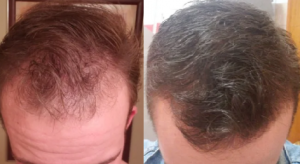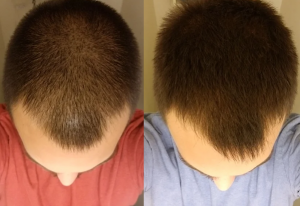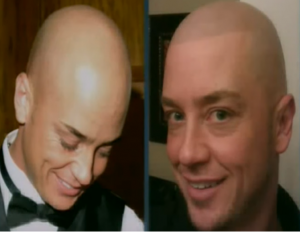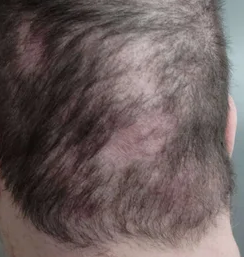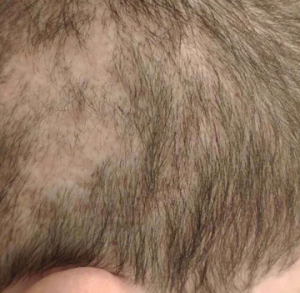I have prescribed thousands of men Finasteride for more than 10 years. Majority of these individuals reported no side effects. Not only does Finasteride help with your hair, it is known to decrease the chances of getting prostate cancer.
From my brief research, FUE results seem to vary, but I wonder how common dissatisfaction with the results is. Has anybody had the procedure and downright regrets it? I remember reading something once where the guy was sorry to have had it as it left him with bad scars (and yes, it was FUE) and he was continuing to lose his hair anyway. I was under the impression that FUE leaves barely noticeable scars, as seen here: https://www.youtube.com/watch?v=JfONQWMTkcAMoreover, I thought the transplanted hair is supposed to last and not be subject to ongoing MPB, even without finasteride.
Bakcground: I’m rapidly heading for NW 6. I tried cropping it short, but I look horrible and the contrast between my pale skin and dense dark hair is making my horse shoe stick out bad no matter what I do. So I’m considering FUE at this point, though with the extent of my hair loss it’s questionable what can be done. I wouldn’t mind keeping my hair buzzed as long as FUE added some density without obvious scarring. What I hate is that sharp line dividing the remaining hairline from bald areas.
The word alopecia means hair loss. When the donor area is Over-harvested such that too much hair is taken from it, then it becomes thinner the more hair that is taken. In some people, the thinning is severe enough to produce a bald donor area. As the inventor of the FUE (see here: https://newhair.com/wp-content/uploads/2018/11/mp-2002-fue.pdf), I have always cautioned that the FUE has a limit for each person and that limit is determined by the density of the donor area (I have defined this limit here: https://newhair.com/resources/#tab-id-4
When it is done within these limits, the results are as you have shown in the link you provided above and undetectable; however, when it is Over-harvested the results may look like this collection of patients I have accumulated who unfortunately fell in the hands of unscrupulous doctors or clinics, many from Turkey (https://baldingblog.com/?s=over-harvested&x=0&y=0).
We love performing FUE but we also know its limits. As a buyer, you must know these limits and find a doctor who is highly ethical and knows the FUE limits as well.
I started recently (I’m thirty) and have been on it for about six months with great results. The only side I felt so far is the mild ache in the testicles from time to time. However recently the ache has come back and is pretty persistent. And I might be paranoid but i read somewhere that propecia even the 1mg one can led to shrinking of the testicles.
If you are having testicular pain with finasteride, see your doctor and get examined. If the two are related and it doesn’t go away with stopping it for a few week, or using a smaller dose, then it might not be the drug for you.
Doubling the finasteride does does not double the gain. In fact, it probably will do nothing to your response. In the original Merck studies on finasteride, doses from 0.1 mg to as high as 10 mgs were tested and the results showed that the 1mg dose gave the best overall response. Increasing the dose might increase the risk of side effects.
If you are over-harvested, you will not grow back your hair. The only solution for this is Scalp Micropigmentation ( https://scalpmicropigmentation.com/scar-covering/ ).
It should be clear from this schematic that to make a single hair, requires the use of epithelial stem cells with a lot of coaxing (click to enlarge).
Functional ectodermal organ regeneration as the next generation of organ replacement therapy, Etsuko Ikeda, Miho Ogawa, Makoto Takeo, Takashi Tsuji Published:06 March 2019https://doi.org/10.1098/rsob.190010
 Author’s Conclusion about Hair: “Because hair follicle stem cells are the only adult stem cells possessing organ-inductive potential that can be transplanted autogenously, the first human clinical trial of organ regenerative therapy will undoubtedly investigate hair follicle regeneration. The regeneration of hair follicles using our organ germ method is now being investigated in a pre-clinical study to cure patients suffering from androgenic alopecia, with an aim of conducting clinical trials in 2020. This hair follicle regenerative therapy will be a milestone in organ regenerative therapies and will lead to the development of material and responsive infrastructure to realize organ regenerative medicine. Applying knowledge of hair follicle regeneration and expertise obtained from clinical trials to other organ germs or organoids will enable the regeneration of other organs from pluripotent and tissue stem cells in combination with organoid technologies in the next few decades.”
Author’s Conclusion about Hair: “Because hair follicle stem cells are the only adult stem cells possessing organ-inductive potential that can be transplanted autogenously, the first human clinical trial of organ regenerative therapy will undoubtedly investigate hair follicle regeneration. The regeneration of hair follicles using our organ germ method is now being investigated in a pre-clinical study to cure patients suffering from androgenic alopecia, with an aim of conducting clinical trials in 2020. This hair follicle regenerative therapy will be a milestone in organ regenerative therapies and will lead to the development of material and responsive infrastructure to realize organ regenerative medicine. Applying knowledge of hair follicle regeneration and expertise obtained from clinical trials to other organ germs or organoids will enable the regeneration of other organs from pluripotent and tissue stem cells in combination with organoid technologies in the next few decades.”
Unless you try, you will not know. Everyone responds differently. If you don’t respond in a year, then a hair transplant will absolutely work and you could look like Elan Musk
How much can I restore with finasteride and/or minoxidil? And what are the chances of side effects (24M, healthy lifestyle) from tressless
How far can I move my hairline down with FUE. I want to change the way I look and I was told that I need a lot of FUE grafts to get where I want to be.
There is no limit to how far you can bring your hairline down, the issue is to bring it down so that it improves your appearance and it is always normal. You need to work with an experienced hair transplant surgeon who can help you do this. FUE is now available in many surgeons hands, but make sure that they are experienced in it by asking to meet with some of their patients who had it done. We offer this every month at a monthly open house event were former patients can discuss the nuances of the hair transplant process as they experienced it. Here is an example of a perfect hairline that I created: https://baldingblog.com/norwood-class-7-pattern-patient-received-11000-grafts-plus-smp/
Are these dermatologists or endocrinologists that talk about post-finasteride syndrime? My dermatologist said the same thing, but when I called local endocrinologists who treat these issues they all said they had many patients dealing with serious finasteride side effects and I should avoid the drug. Derms write year long prescriptions for this drug, and it’s very possible these side effects aren’t always reported back to the dermatologist when the medication is ceased. Have you asked endocrinologists?
There is some uncertainty on the existence of Past Finasteride Syndrome. I have never seen it in my practice after prescribing it well over 10,000 times. This experience has been shared by many of my colleagues. If a patient complains about reduced sexual function I either reduce the drug and have they try it or tell them, failing a reduction of the dose to work, to stop the medication. Since I am quick and responsive to my patients, I feel that this syndrome has not appeared in my practice.
See abstract here: https://www.degruyter.com/view/j/hmbci.2017.30.issue-3/hmbci-2017-0015/hmbci-2017-0015.xml

